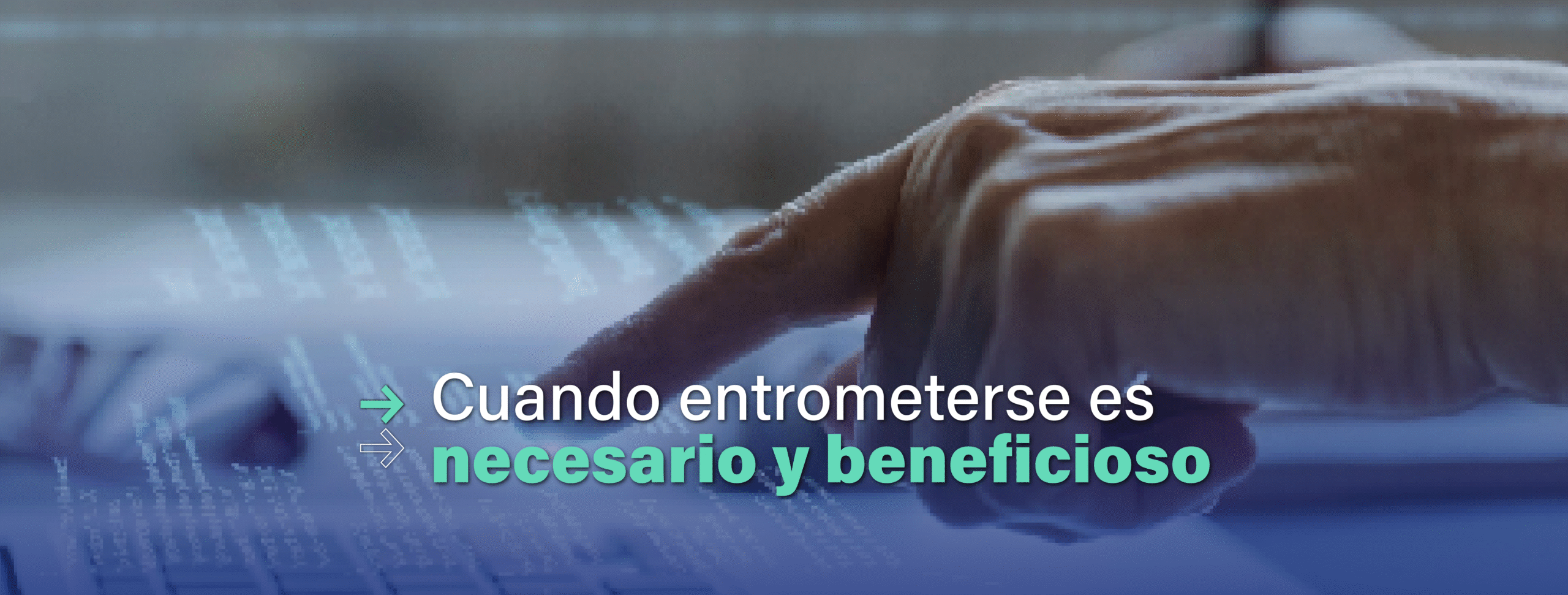Pentesting: The Key to Anticipating Threats and Strengthening Cybersecurity
In a complex and dynamic digital environment, organizations face increasingly sophisticated cyberattacks.
Simply implementing firewalls, intrusion detection systems, or antivirus software no longer guarantees the complete security of critical assets.
True digital resilience is achieved through proactive strategies that anticipate attacks, identify vulnerabilities, and strengthen defenses.
As he told us Salvador Vial, Principal Executive Security Advisor and Field CISO of Amazon Web Services (AWS), in a exclusive conversation that we had with him, Cybersecurity is not the exclusive responsibility of specialists but an essential part of the business.
That is why pentesting, or penetration testing, It has become a key tool within these cybersecurity strategies., which allows you to simulate real attacks in a controlled manner to discover security flaws and receive detailed reports on how to strengthen your technological infrastructure.
In this article, we analyze the benefits that pentesting brings to a company's cybersecurity, its implementation phases, and the main challenges ahead.
In addition, we explore similarities and differences with ethical hacking, and share the potential of two key solutions that IT Patagonia uses to develop efficient pentesting processes: Faraday and BeyGoo.
What is pentesting and what does it involve?
Pentesting involves assessing the security of systems, networks, and applications through controlled attack simulations.
Unlike a real attack, it is carried out with the authorization of the organization that wants to strengthen its security, which allows you to identify vulnerabilities without compromising normal operations.
It involves a comprehensive approach, analyzing not only the technological infrastructure but also the security of processes and configurations, along with staff preparedness against threats.
This approach protects confidential information and helps comply with regulations, reduce reputational risks and strengthen the trust of customers, partners and auditors.
This makes pentesting a strategic tool for continuous improvement, in which each finding is translated into concrete actions to strengthen digital defense.
Similarities and differences between pentesting and ethical hacking
Ethical hacking and pentesting share common goals. These include: Anticipate attacks, protect information, and add value to the organization's cybersecurity.
Both use attacker techniques, require authorization, and seek to proactively protect systems.
Pentesting can even be considered a technique within the universe of ethical hacking, which applies a practical and controlled approach to assessing risks.
However, there are also important differences between the two.
Ethical hacking is a broader concept, encompassing security audits, continuous testing, and compliance assessments. Pentesting, on the other hand, is a limited, one-time process that simulates specific attacks to measure vulnerability.
Types of pentesting
There are different types of pentesting depending on the objective, scope, and nature of the systems being tested:
- Network Pentesting: Analyzes internal and external network infrastructure to detect vulnerabilities in routers, switches, firewalls, or network segmentation.
- Pentesting of web and mobile applications: Identifies code errors, misconfigurations, SQL injections, XSS vulnerabilities, or authentication issues.
- Wireless Systems Pentesting: assesses the security of Wi-Fi, Bluetooth, and other wireless technologies.
- Physical Pentesting: Test for unauthorized access to physical facilities, devices, and systems that could compromise digital security.
- Social Pentesting: assesses employees' susceptibility to social engineering techniques, such as phishing or pretexting.
- Pentesting of APIs and cloud services: examines the security of integrations, SaaS services, and multi-cloud environments.

Phases for implementing pentesting processes
Implementing a pentesting process isn't just about running technical tests, but about following a structured methodology that ensures reliable and actionable results.
Each phase plays a fundamental role: from initial planning to post-remediation follow-up. This ensures that vulnerabilities are not only identified, but also effectively mitigated.
An effective pentesting process follows several critical stages:
1. Planning and scope definition: Objectives, systems, and necessary permits are established. Success criteria and limitations are agreed upon to ensure safety and legality.
2. Recognition: gathering information about infrastructure, users, domains, active services and potential attack vectors.
3. Vulnerability scanning and analysis: Identifying faults in systems, applications, or configurations. This combines automated tools and manual analysis.
4. Exploitation: An attempt to exploit vulnerabilities to measure the actual risk. This allows the potential impact of a real attack to be assessed.
5, Post-exploitation and documentation: Evidence is collected, the scope of the commitment is assessed, and clear reports with mitigation recommendations are produced.
6. Monitoring and re-testing: After implementing fixes, additional testing is performed to ensure that the vulnerabilities were effectively mitigated.
Faraday: Powering Pentesting and Ethical Hacking
Our partner, Faraday, is a collaborative penetration testing management platform that delivers value on several key levels.
– Centralization of information
In a pentesting project, specialists generate a large amount of data: findings, vulnerabilities, evidence, screenshots, partial reports, etc.
Faraday centralizes all this information in a single, secure repository, preventing data loss and enabling rapid, structured access to results. This increases efficiency and reduces operational errors.
– Real-time collaboration
Pentesting often involves distributed teams, either internal or external.
Faraday enables collaborative work, assigning tasks, updating findings, and viewing progress in real time.
This facilitates coordination between ethical hacking experts, security analysts, and IT teams at the organization being evaluated.
– Integration with security tools
Faraday integrates with vulnerability scanners, network analysis tools, exploitation frameworks, and ticketing systems.
This allows for the automatic import of results, eliminating manual processes and speeding up the identification of critical risks.

– Generation of clear and customizable reports
One of the challenges of pentesting is communicating results effectively. Faraday generates detailed, structured, and customizable reports based on the target audience: technical, management, or auditing.
The goal is to ensure that each finding has concrete recommendations for mitigation and prioritization based on impact.
– Continuous improvement and traceability
Faraday allows you to store the history of findings, corrected vulnerabilities, and implemented mitigation actions.
This structure not only facilitates monitoring, but also generates continuous feedback to improve future penetration tests and strengthen the organization's cybersecurity culture.
– Scalability and standardization of processes
By automating and centralizing processes, Faraday enables organizations to scale their pentesting operations without losing consistency or quality.
An especially valuable feature for companies with multiple ethical hacking teams or complex technology environments.
BeyGoo: An additional layer of visibility and protection to proactively identify and mitigate risks.
The cybersecurity platform BeyGoo, also a partner of IT Patagonia, specializes in early detection of incidents and fraud prevention.
To achieve this, use artificial intelligence and automated processes, which allow monitoring of organizations' digital assets.
Although not directly focused on penetration testing (pentesting), its proactive approach and ability to identify vulnerabilities and threats in real time complement and reinforce pentesting strategies.
The value contributions that BeyGoo provides in relation to pentesting are the following:
– Early threat detection
Continuously monitors thousands of sources on the clear, deep, and dark web, identifying suspicious activity, data breaches, and phishing.
This capability allows organizations to detect potential attack vectors before they are exploited.
– Digital Asset Monitoring
The platform provides visibility into domains, subdomains, social media profiles, and other digital assets, helping to identify misconfigurations or forgotten assets that could be exploited in an attack.
– Protection of key figures
Provides customized protection for key employees within the organization, monitoring their digital exposure and detecting risks associated with leaked credentials or phishing attempts.
– Third-party risk management
The platform monitors the digital exposure of suppliers and partners to identify risks that could affect the organization, which is crucial in an interconnected environment.
– Response Automation
With tools like TakedownX, BeyGoo automates the removal of malicious sites and fake profiles, accelerating incident response and reducing the time between detection and mitigation.

Benefits of pentesting
Pentesting offers strategic and operational advantages, such as the early identification of critical vulnerabilities that could compromise sensitive information.
Also the Risk prioritization based on actual impact and probability of exploitation, in addition to the continuous improvement of the security posture and strengthening of the organizational culture in the face of cyber threats.
It also allows you to comply with regulations, standards and audits (ISO 27001, PCI-DSS, GDPR, NIST).
Another benefit that pentesting brings is the Reducing costs associated with security incidents through proactive prevention.
It also increases the trust of customers, partners, and stakeholders by demonstrating commitment to cybersecurity.
Main challenges of pentesting
Despite its importance, pentesting faces significant challenges. Among them are the following:
- Constantly evolving threats: Attackers develop increasingly sophisticated techniques, requiring continuous updates in methodologies.
- Complex and distributed environments: The proliferation of hybrid and multi-cloud infrastructures makes covering all systems a technical and operational challenge.
- Automation vs. human judgment: Automated tools speed up analysis, but do not replace the experience of the pentesting specialist.
- Talent shortage: The high demand for pentesters and ethical hacking experts exceeds the supply of qualified professionals.
- Impact of artificial intelligence: AI can be used by both defenders and attackers, increasing the sophistication of attacks and the need for advanced approaches in penetration testing.
- Legal and ethical aspects: Maintaining authorization, privacy, and regulatory compliance for every test requires clear coordination and governance.
An effective response for operational safety
Pentesting is a strategic component of modern cybersecurity. Along with ethical hacking, it allows you to anticipate attacks, identify vulnerabilities, and proactively strengthen defenses.
In a digital world where threats are constantly evolving, pentesting isn't just a technique: it's an investment in resilience, trust, and business continuity.
Get to know how to scale operations a secure, comprehensive ecosystem that combines automation, resilience, and regulatory compliance.

